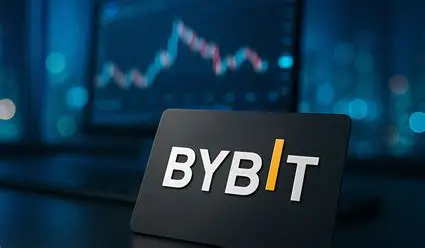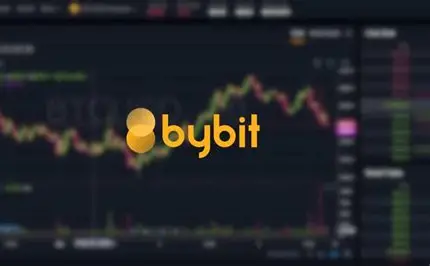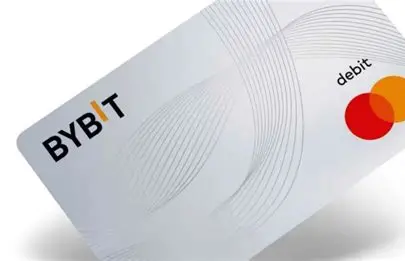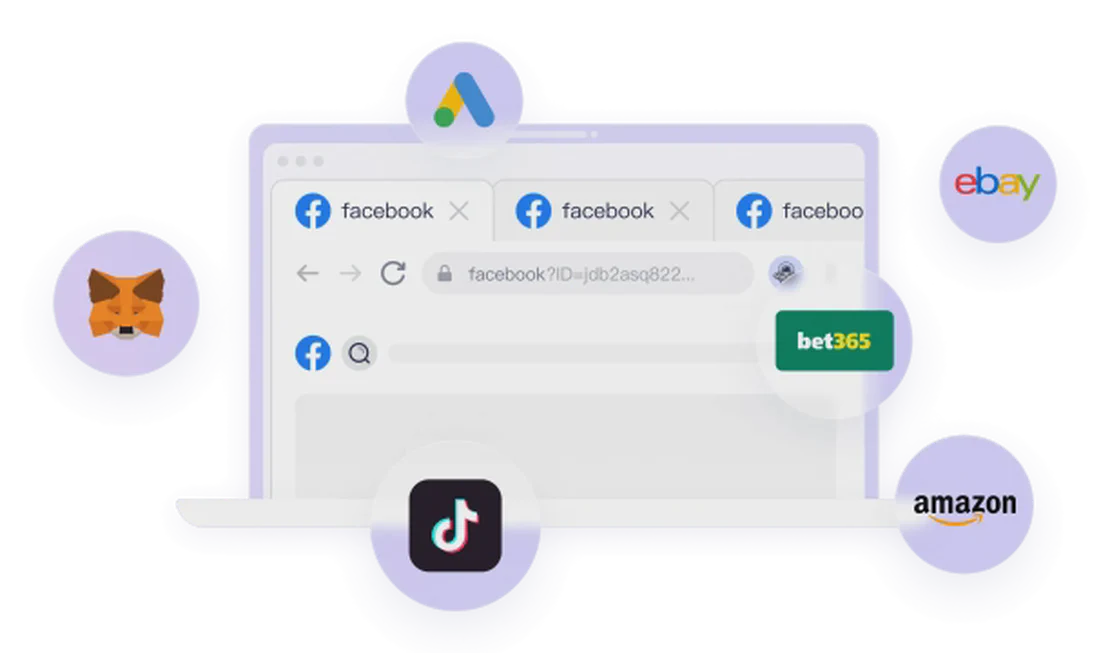At the crest of the cryptocurrency wave, futures trading, with its promise of bi-directional profits and high leverage, lures countless adventurers seeking accelerated wealth growth. However, this ocean of profit is also rife with treacherous undercurrents, filled with the risks of being devoured by leverage or wiped out by market volatility. A few years ago, a beginner’s guide to Bybit might have sufficed, but today, the platform’s interface, features, and trading logic have all been overhauled. Navigating these new waters with an old map is a recipe for getting lost.
This article is a brand-new, comprehensive guide to Bybit futures trading, specifically crafted for 2025. It will guide you through the fog of trading, from the most basic account setup to core risk management, and finally to advanced position and profit planning, facilitating a mental shift from an “operator” to a “strategist.” This is not merely a software manual but a philosophy of risk respect and strategic discipline essential for trading.

Laying the Foundation: The “First Kilometer” of Your Trading Journey
Any grand trading strategy begins with mastering the fundamental tools. On Bybit, this first step is crucial and often overlooked by newcomers.
Capital Preparation: Embrace the “Unified Trading Account”
When you first open the Bybit app and attempt to enter the futures market, the first thing you face is the issue of where to place your funds. The tutorial clearly states that funds used for futures, spot, copy trading, or trading bots must be in your “Unified Trading Account.”
This is not an arbitrary setting but the first gate in the platform’s risk control system. Your “Funding Account” is more like a wallet or vault for assets, used for deposits, withdrawals, and savings. The “Unified Trading Account,” however, is your “battle account” within the exchange—the “principal pool” where all trading activities take place.
Workflow:
- Go to the [Assets] page and check if your USDT is in the “Unified Trading Account.”
- If your funds are in the “Funding Account,” click [Transfer], select the source as “Funding Account,” the target as “Unified Trading Account,” the currency as USDT, enter the amount, and confirm.
- After a successful transfer, your “Unified Trading Account” will be funded.
Interface Navigation: Your “Battle Map” and “Intelligence Center”
Bybit’s trading interface consists of two core areas: “Chart” and “Trade,” serving as the trader’s “map” and “command center.”
Chart Area — Intelligence Center: This is the battlefield for technical analysis. In addition to basic candlestick charts, time frame options, and drawing tools like trendlines and rectangles, the platform also comes equipped with various technical indicators (e.g., MA, EMA, BOLL). More importantly, it gathers intelligence needed for fundamental analysis:
- Order Book: The green side represents buyers going long (bullish), while the red side represents sellers going short (bearish). This is the most direct reflection of bullish and bearish power.
- Trade History: Shows the size and time of executed trades in real-time, offering insight into the actions of market whales.
- Market Data: 24h high/low, volume, market cap, etc., helping you gauge market activity and current price ranges.
- Events Calendar: Highlights major upcoming events that could impact the price, a valuable intelligence source for fundamental traders.
Trade Area — Command Center: This is where orders are executed, positions are managed, and risk is controlled. All your decisions—direction, leverage, entry, take-profit, stop-loss—are turned into action here.
Time Frames: Matching Your “Battle Rhythm”
The time frame is the cornerstone of technical analysis, but many misunderstand its purpose : it determines the “space-time unit” of each candle on the chart, not how long you must hold your position.
- 5-min to 15-min: Suited for Day Traders who hold positions from several hours to a day, targeting short-term trends and intraday volatility.
- 1-hour to 4-hour: Also commonly used by day traders to determine medium-term trend entry and exit points.
- 1-day to 1-week: Suited for Swing Traders who hold positions for days to weeks, aiming to capture a complete up or down swing.
Core Idea: Your trading strategy must align with your chosen time frame. A scalper using a daily chart is as absurd as using a sniper rifle for street fighting.
Core Strategy: The “Three Horsemen” of Risk Taming
Margin mode and leverage management are the two most complex and potentially fatal concepts in futures trading. Understanding them marks your true transition from novice to pro.
Margin Mode: Choose Your “Risk Isolation Shield”
Bybit offers three margin modes, but beginners should focus only on the first two.
- Isolated Margin: This mode is tailored for beginners and conservative traders as the “safety first” option. In this mode, the funds used for each order are “isolated.” If that position is liquidated, you only lose the principal you put into that specific trade. For example, if you have 1,000 USDT in your account and open a 300 USDT position, even if that position is force-liquidated, you only lose the 300 USDT; the remaining 700 USDT is protected.
- Cross Margin: This is a mode for advanced players seeking “capital efficiency,” but it comes with significant risk. In this mode, all the funds in your account, including unused capital, are used as “risk collateral” for all your positions. If you face a loss in one direction, the system will automatically deduct funds from your unused capital to sustain the position. This means a single misjudgment could lead to the complete wipeout of your account.
Conclusion: Unless you have absolute confidence in your trading system and risk control, always choose the “Isolated Margin” mode. It’s the most important “life jacket” you can have in this high-risk ocean.
Leverage: The Amplifier of “Profit and Loss”
Leverage is the source of allure in futures trading but also an amplifier of risk. It’s a neutral tool; the key lies in how you use it.
Mechanism: 10x leverage means that with 1 USDT, you can control a contract worth 10 USDT. If the market moves 1% in your favor, your profit is 1% * 10 = 10%. Conversely, if the market moves 1% against you, your loss is also 1% * 10 = 10%.
The Cost of Leverage: High leverage (e.g., above 30x) is a double-edged sword. While it can yield astonishing returns on small price movements, it can also instantly liquidate your position in a sharp, short-term fluctuation (V-reversal, wick piercing).
Safety Advice: “Never exceed 30x leverage.” For traders seeking stable profits, 5x, 10x, or 15x are more reasonable and safer choices. Low leverage may reduce the potential return on a single trade, but it provides more room for error to review and adjust your position, which is key to long-term survival.

Advanced Techniques: Building Your Trading “Automation System”
Once you’ve mastered the basics and core strategies, the next step is to use tools and discipline to optimize your trade execution, overcoming the greed and fear of human nature.
Limit and Market Orders: Choosing Your “Entry Method”
- Limit Order: Allows you to set a desired entry price. The order will only be executed if the market price reaches or is better than your price. Its advantage is the potential for a better fill price; its disadvantage is that it is not guaranteed to fill, potentially causing you to miss the market when you want to enter quickly.
- Market Order: Executes immediately at the current best market price. Its advantage is the fastest execution, ensuring a fill; its disadvantage is the potential for slippage in the fill price, especially during high volatility.
Use Case: In a range-bound market expecting a clear breakout, using a limit order to buy below a support level allows you to get in at a cheaper price. In a clearly defined upward trend, using a market buy order is a better choice to get in quickly.
Precise Take-Profit and Stop-Loss: The Trader’s “Lifeline”
Take-profit and stop-loss are not options; they are essential components of any trade. Every position opened must have a planned exit condition.
- Setting TP/SL: On the Bybit trading panel, you can directly input your desired take-profit and stop-loss prices. When the price hits your take-profit level, the system will automatically close the position to lock in profits. When it hits your stop-loss level, the system will automatically close the position to limit the loss, preventing you from incurring greater damage due to hesitation.
- How to Calculate Values: A stop-loss should be set based on your trading strategy and risk tolerance. A common rule is the “1R or 2R” rule, meaning your potential loss should be 1% or 2% of your principal. For example, if you invest 100 USDT, your stop-loss should be set at a point where you would lose 1 or 2 USDT.
Pyramid Take-Profit: The “Pyramid Harvesting Strategy” for Profits
This is a very valuable technique shown , designed to solve the conflict between “taking profit too early and missing out on further gains” or “taking profit too late and giving back gains.”
Method: Suppose you are bullish on BTC with a target of $19,200 but worry it won’t be reached in one go. You can set three take-profit points:
- 1st TP: At $16,754, sell 50% of your position to realize a ~10% profit. At this point, you have recovered half your cost, making the rest of the trade “risk-free.”
- 2nd TP: At $17,500, sell 75% of the remaining position (37.5% of the total) for a higher profit.
- 3rd TP: At $19,200, sell the final remaining 100% to complete the entire trading plan.
Core Advantages: This method allows you to lock in some guaranteed profit while still letting your profits ride for a larger move. Simultaneously, it strictly adheres to the rule that only the final take-profit point can be set to 100%; all other partial take-profits must be less than 100%, otherwise the system will interpret it as a desire to close the entire position at once, invalidating your subsequent plans.
Funding Rate: The Game for Arbitrageurs and Holders
The funding rate is a unique mechanism in the perpetual futures market, acting as a bridge between the spot and futures prices.
- Positive Rate (+): The long (buy) side pays a fee to the short (sell) side. This typically indicates bullish market sentiment, where the futures price is higher than the spot price.
- Negative Rate (-): The short (sell) side pays a fee to the long (buy) side. This typically indicates bearish market sentiment, where the futures price is lower than the spot price.
Meaning for Traders: It is a “cost” or “income” item. If you are a long-term trend follower, a positive funding rate increases your holding cost. However, if you are a high-frequency arbitrageur, you could potentially use this rate difference for risk-free or low-risk arbitrage (though this is complex and not recommended for beginners). In short, monitoring funding rate changes helps you understand the current balance of bullish and bearish market sentiment.
Trading Wisdom: From “Candlestick Hunter” to “Digital Farmer”
Bybit’s platform features are already excellent, but a truly successful trader must go beyond the platform and build their own trading system. In this, the calculator and strategic mindset are the two pillars.
Bybit’s built-in [Futures Calculator] is your best friend. Before any trade, you should use it to:
- Predict P&L: Input your entry price, target price, leverage, and quantity, and the system will calculate your expected profit/loss in amount and percentage.
- Reverse-Engineer: Input your desired ROI, leverage, entry price, and quantity, and the system will calculate the target price you need to achieve, making your goal setting more scientific.
- Determine Position Size: Through calculation, you can know how large a position you should open within your set risk limit (e.g., not losing more than 100 USDT).
Behind this tool lies the trading plan and discipline you must establish. Never trade on a whim or when emotionally “tilted.” Every opening of a position should be the execution of a plan; every closing should be the completion or adjustment of a strategy.
Building a Secure Trading Environment: The “Firewall” for Your Digital Identity
In the world of cryptocurrency, your Bybit account is more than just a trading platform; it holds your funds, your trading strategy, and even your business credibility. When you begin more complex operations, such as:
- Running Multiple Strategies in Parallel: Simultaneously running trend-following and grid trading requires separate accounts and IP environments to avoid interference.
- Multi-Currency Arbitrage: Finding arbitrage opportunities across BTC, ETH, SOL, and other markets requires managing multiple accounts.
- Personal Investing vs. Agency Management: You need to establish separate accounts for yourself and your clients, with clear and distinct rights and responsibilities.
All these scenarios lead to a common risk: account association. If all operations are conducted through the same browser and network, Bybit’s risk control system can easily recognize the correlation in your behavior, deeming it as violations like “wash trading” or “self-matchmaking.” This can result in anything from functional limitations to direct account bans, causing incalculable losses.
FlashID Anti-Detection Browser exists to solve this core pain point. It’s not just a multi-account management tool but a “digital identity isolation system” built for professional traders. With FlashID, you can create a completely separate digital environment for each individual trading project, strategy, or client. Each environment has its own independent IP address, browser fingerprint, cookies, and digital credentials.
This means:
- Risk Isolation: An issue with one account due to a specific strategy will not affect your other trading assets or business.
- Strategy Purity: You can ensure that the analysis for each account is independent, avoiding cross-contamination and strategy interference.
- Business Security: When offering managed account services, you can perfectly separate client assets from personal assets, building a professional, trustworthy brand image.
- Automation Integration: Combined with RPA automation, you can set up automated trading scripts in their respective FlashID environments to achieve 7x24 unmanned multi-account operation, saving significant labor costs and allowing you to evolve from a “candlestick hunter” into a “digital farmer.”
On your trading journey on Bybit, technical analysis, risk management, and discipline are three equally important pillars. In today’s digital and networked age, protecting your trading identity matrix is about safeguarding the trading kingdom and business empire you’ve worked so hard to build. FlashID is your strongest digital firewall.

Frequently Asked Questions (FAQ)
Q: What is the essential difference between the “Unified Trading Account” and the “Funding Account”? Why must funds be transferred to the former?
A: The “Funding Account” is primarily for depositing, withdrawing, and holding assets, acting like your personal wallet. The “Unified Trading Account,” however, is your “principal pool” within the platform; all order-placing and position-opening transactions deduct and calculate profits and losses from here. This is a platform risk control requirement to ensure traceability and security of trading funds.
Q: What time frame chart should a beginner use?
A: It’s recommended to start with the 1-hour or 4-hour time frame. This level filters out most of the market’s noise and doesn’t “compress” the chart so much that you miss important entry signals. Short-term trading demands high reaction speed and execution, which is not suitable for beginners.
Q: Is it mandatory to set a stop-loss? Can I just not set one if I don’t want to lose money?
A: A stop-loss is mandatory. Trading without a stop-loss exposes your account to limitless market risk. A single “black swan” event or a sharp, unexpected fluctuation could wipe you out. A stop-loss is the discipline of a professional trader and the first rule of survival.
Q: The article says “don’t exceed 30x leverage.” Does that mean high leverage should never be touched? A: 30x is an empirical safety threshold, a suggestion for traders seeking stable profits. High leverage (e.g., 50x, 100x) is a pure gambling tool that amplifies human weaknesses, extremely leading to emotional decisions and rapid losses. Unless you are an extremely experienced trader with a well-honed risk control system, you should stay away from it.
Q: In the “pyramid take-profit” strategy, why can only the final take-profit point be set to 100%?
A: The logic of Bybit’s order system is that when you set a take-profit point, it represents a complete “sell all” instruction. If you also set 100% on a regular take-profit point (like the first or second), when the price reaches that point, the system will immediately execute the “sell all” instruction, thus canceling all your subsequent, higher-priced take-profit orders. Therefore, you can only safely set 100% at your final intended exit point.
Q: What is the “Liquidation Price,” and how is it different from the stop-loss price?
A: The “Liquidation Price” is the price where your account’s “lifeline is brutally cut.” When your losses cause your account’s margin rate to fall below the platform’s requirement, the system will force-close all your positions at the market price to prevent you from owing the platform money. Your stop-loss is the risk control point you proactively set; it usually occurs long before the liquidation price. Therefore, the ultimate purpose of setting a stop-loss is to avoid hitting that terrifying liquidation price.
Q: What is “slippage,” and does a market order always cause slippage?
A: “Slippage” is the difference between your actual execution price and your expected price (usually the market price at the time of placing the order). When market liquidity is good and price fluctuations are mild, slippage is small or non-existent. However, when encountering wick-piercing candles, high-impact news releases, or large order imbalances, the execution price of a market order could be far below (for shorts) or far above (for longs) your expectations. This is “slippage.”
Q: Besides the Bybit platform itself, why do I need to consider external tools like “account isolation”?
A: Bybit only cares if you are “trading compliantly,” but a professional trader needs to care about “how to isolate different business activities to avoid platform misjudgment and protect asset security.” When you are operating multiple accounts and strategies, the same browser fingerprint is the biggest risk source. Tools like FlashID are designed to solve this problem, dressing your different businesses in different “disguises.”
Q: Is using tools like FlashID for multi-account management a violation of exchange service terms like Bybit’s?
A: Most exchange service terms prohibit “automated trading bots,” “wash trading,” and other behaviors that harm market fairness, not “multi-account management.” As long as all your accounts abide by the platform’s rules and you don’t engage in malicious actions, using independent browser fingerprints to manage different accounts is, in essence, for improving your own operational efficiency and risk control, and is generally not forbidden. However, you must always carefully read the specific terms of each platform.
Q: Besides futures trading, in what other cryptocurrency scenarios can FlashID be used?
A: The principle of FlashID applies to any scenario that requires managing multiple independent digital identities, such as: Affiliate Marketing to promote different product lines; Social Media to manage multiple marketing IPs; NFT projects to manage different wallet addresses for “floor price sniping” and community management; and for Web3 projects’ airdrop tasks. It ensures the independence of each action, maximizing official benefits while mitigating risks.
You May Also Like
